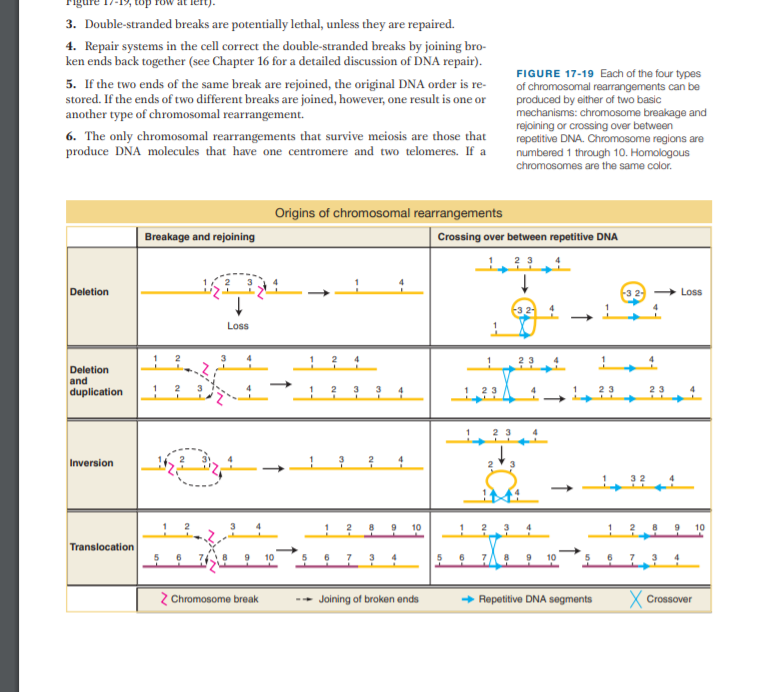3. Double-stranded breaks are potentially lethal, unless they are repaired. 4. Repair systems in the cell correct the double-stranded breaks by joining bro- ken ends back together (see Chapter 16 for a detailed discussion of DNA repair). FIGURE 17-19 Each of the four types of chromosomal rearrangements can be produced by either of two basic mechanisms: chromosome breakage and rejoining or crossing over between repetitive DNA. Chromosome regions are numbered 1 through 10. Homologous 5. If the two ends of the same break are rejoined, the original DNA order is re- stored. If the ends of two different breaks are joined, however, one result is one or another type of chromosomal rearrangement. 6. The only chromosomal rearrangements that survive meiosis are those that produce DNA molecules that have one centromere and two telomeres. If a chromosomes are the same color. Origins of chromosomal rearrangements Breakage and rejoining Crossing over between repetitive DNA Deletion -3 2 Loss 32 4 Loss Deletion and duplication 3 4 23 23 4 Inversion ! 10 10 Translocation 10 6 2 Chromosome break - Joining of broken ends Repetitive DNA segments X Crossover
Genetic Variation
Genetic variation refers to the variation in the genome sequences between individual organisms of a species. Individual differences or population differences can both be referred to as genetic variations. It is primarily caused by mutation, but other factors such as genetic drift and sexual reproduction also play a major role.
Quantitative Genetics
Quantitative genetics is the part of genetics that deals with the continuous trait, where the expression of various genes influences the phenotypes. Thus genes are expressed together to produce a trait with continuous variability. This is unlike the classical traits or qualitative traits, where each trait is controlled by the expression of a single or very few genes to produce a discontinuous variation.
Referring to Figure 17-19, draw a diagram showing the
process whereby an inversion formed from crossing over
could generate a normal sequence.

Step by step
Solved in 2 steps with 1 images







